


Immerse yourself in the Indian embroidery culture and get ready to discover the magic of Chikankari.
Of course, you will often have read in history books and elsewhere that India is one of the most diverse and culturally rich lands found anywhere in the world.
The country is praised for its uniqueness, from languages to traditions and dressing styles.
But today, I want to shed light on a lesser-known but much-cherished style statement of this country – Chikankari.
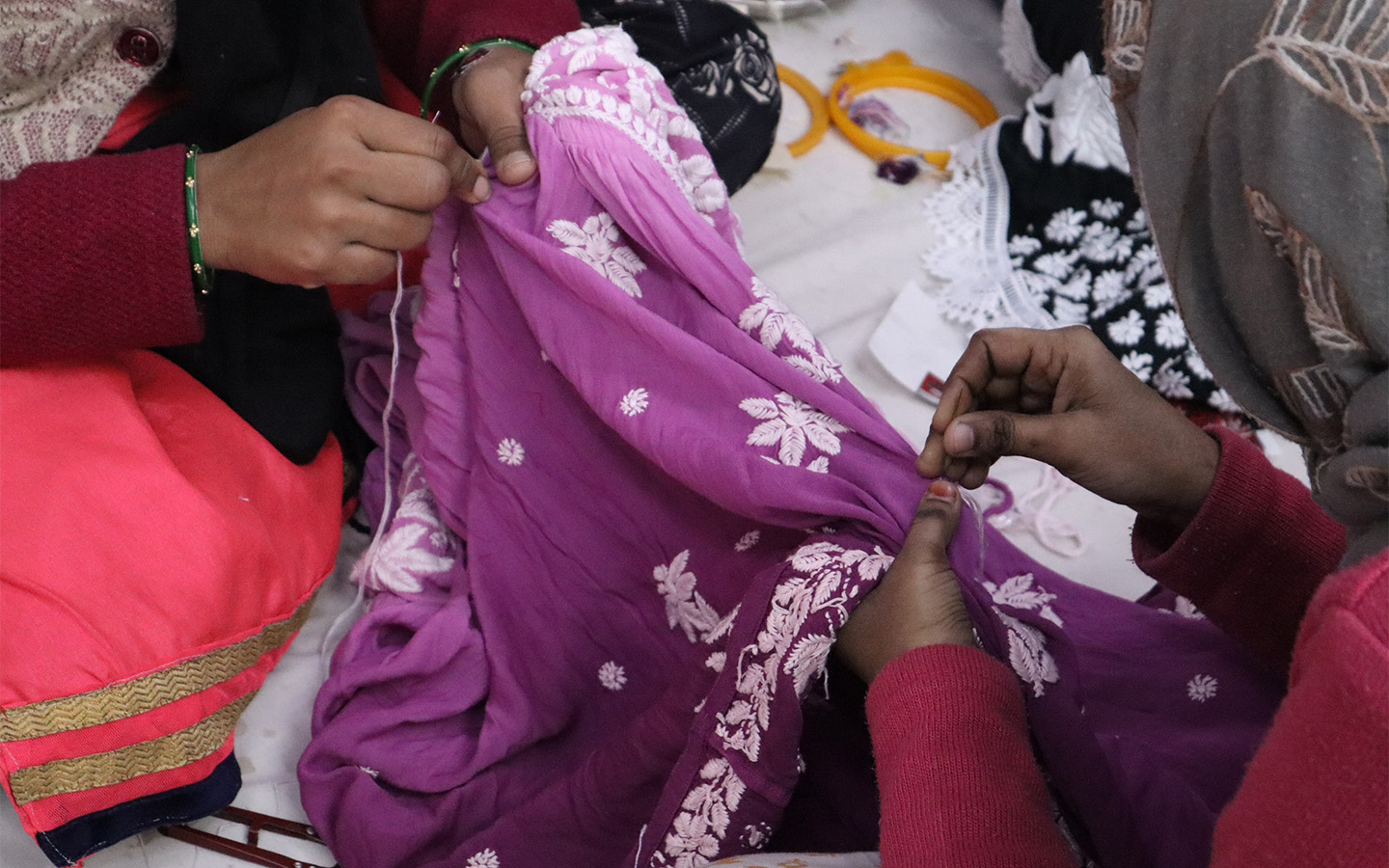
The most authentic Chikankari is particularly known for its intricate thread work From the Bachchan Family – an Indian film industry family – to Madonna, the pristine beauty of this delicate and artfully handmade embroidery has gained many fans over the years.
Chikankari is a lot more than mere art; it has global appeal.
Everything you need to know about Lucknow Chikankari embroidery
The city of Nawabs, Lucknow, in India is not only renowned for its cuisine but also for its stunning, delicate, traditionally white-on-white embroidery known as Chikankari.
This type of intricate shadow work is refined and elegant but also a time-consuming process practised mainly by the skilled artisans in Lucknow.
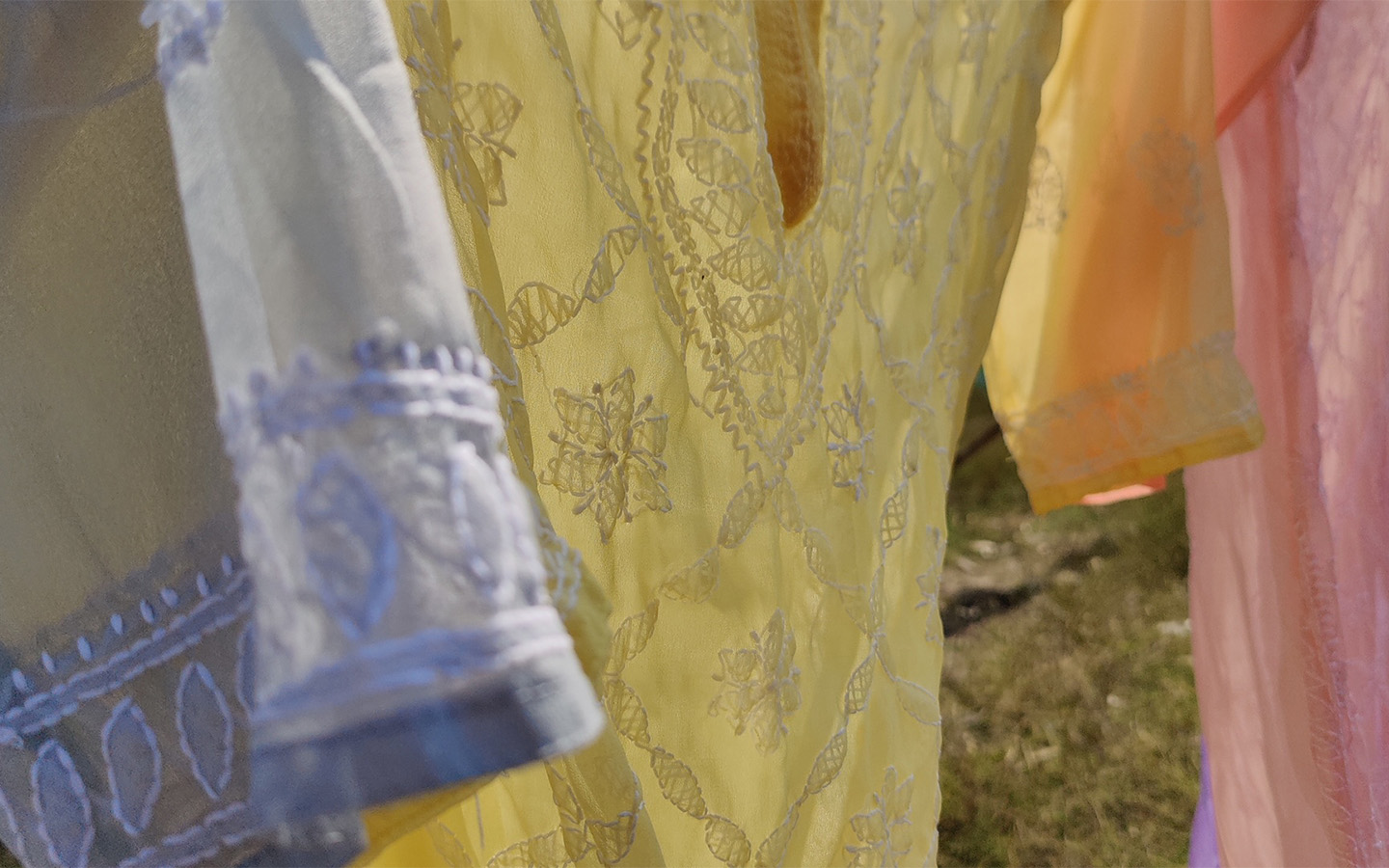
Chikankari is one of the finest embroideries evoking the culture of Lucknow, India Of course, it reflects the royal charisma of the city and its people right from the palace era to the skyscrapers of today.
Why is Chikankari called that?
This traditional craft dates back to the 3rd century BC when Megasthenes, a Greek traveller, mentioned the use of ‘flowered muslins’ by Indians in his book.
Historians say the word ‘Chikankari’ derives from the Persian word ‘chikin’, which means any kind of embroidered flower.
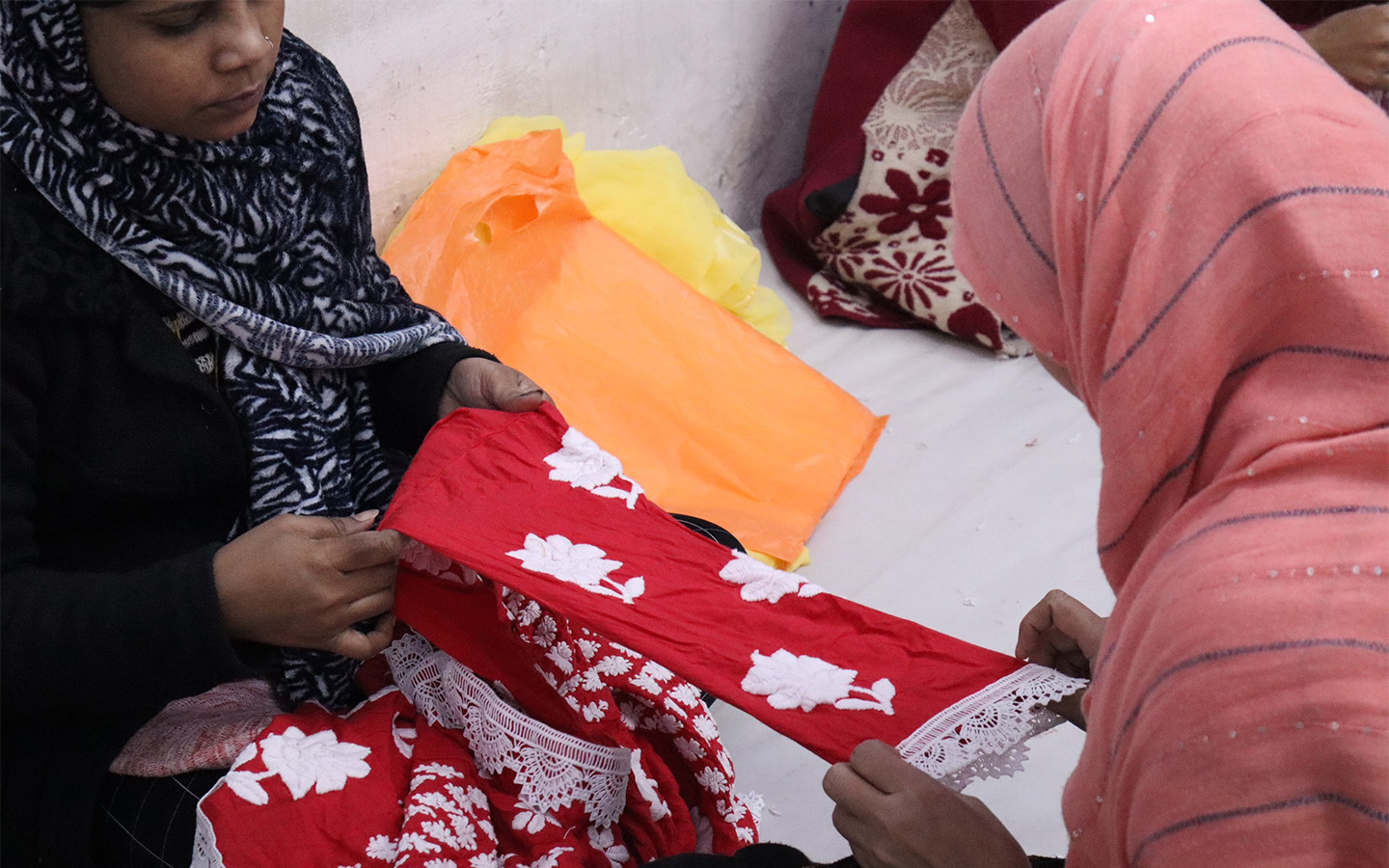
The origins of this needlework remain shrouded in the mists of time
An old folk tale suggests that a traveller taught Chikankari to a peasant in return for drinking water. Still, the factually backed up story is that Noor Jaan, the wife of Mughal emperor Jahangir, introduced Persian art to India in the 17thcentury. Eventually, it became a favourite among Mughal nobility.
In the 18th century, Chikankari started gaining popularity all over the country.
Which fabrics can be used for this embroidery technique?
Chikankari is weaved on soft, thin muslin fabrics with a white thread, worn especially in summers.
Like the magic of having ice cream under the sun’s scorching heat, when you wear a chikan kurta – the traditional Indian long loose shirt – the breeze flows through the light fabric and leaves your body refreshed.
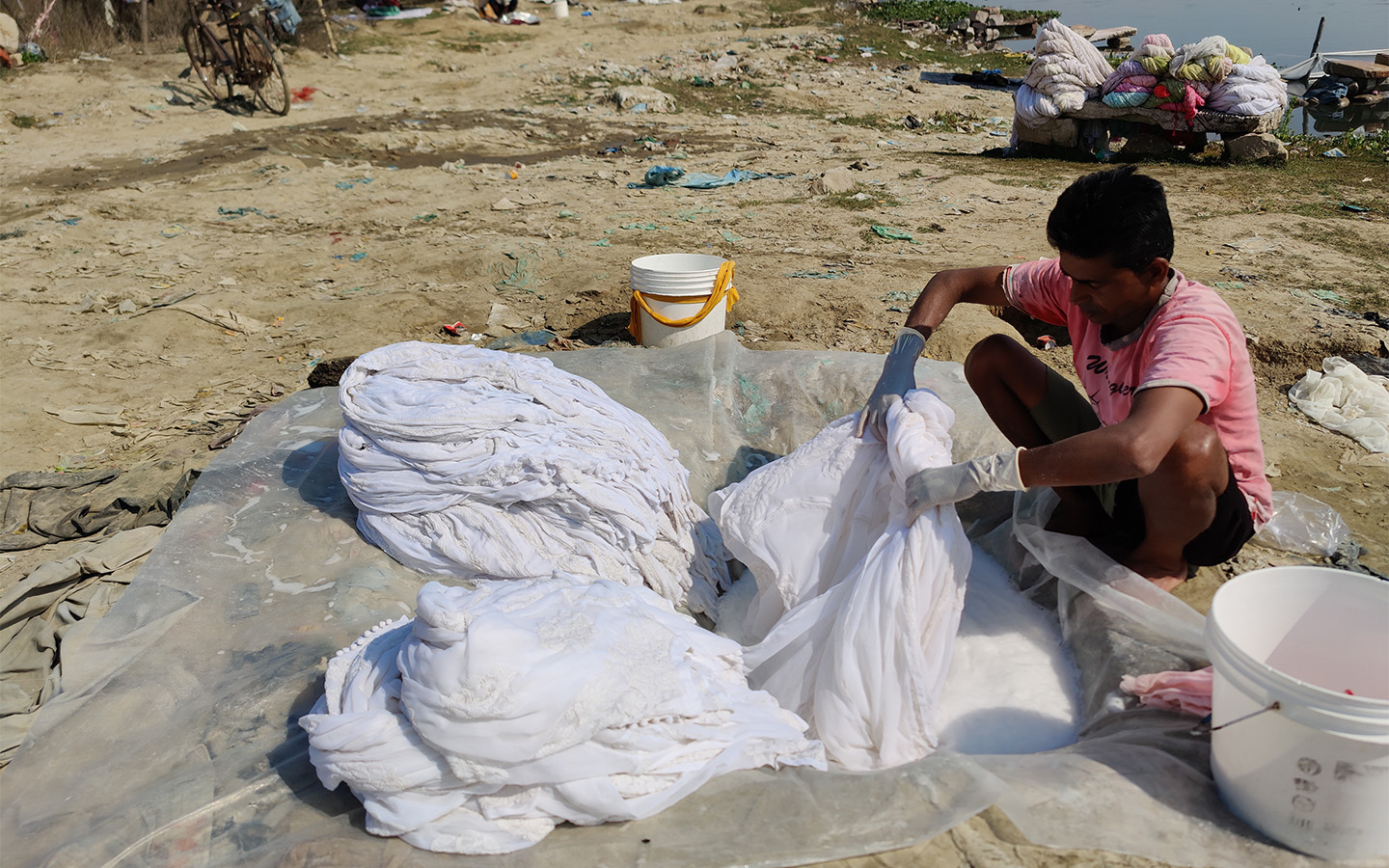
Chikan is a delicate and artfully done hand embroidery on a variety of light fabrics Chikankari works on cotton, georgette and linen, as these light, breathable and sweat-wicking fabrics do not stick to the body.
How Chikan work is done
The Lucknow Chikankari technique can be split into two stages: the pre- and post-preparation.
The pre-work involves determining the design and engraving it on wooden block stamps. These stamps are then used for block printing the design on the cloth with the help of Neel and Safeda dyes.
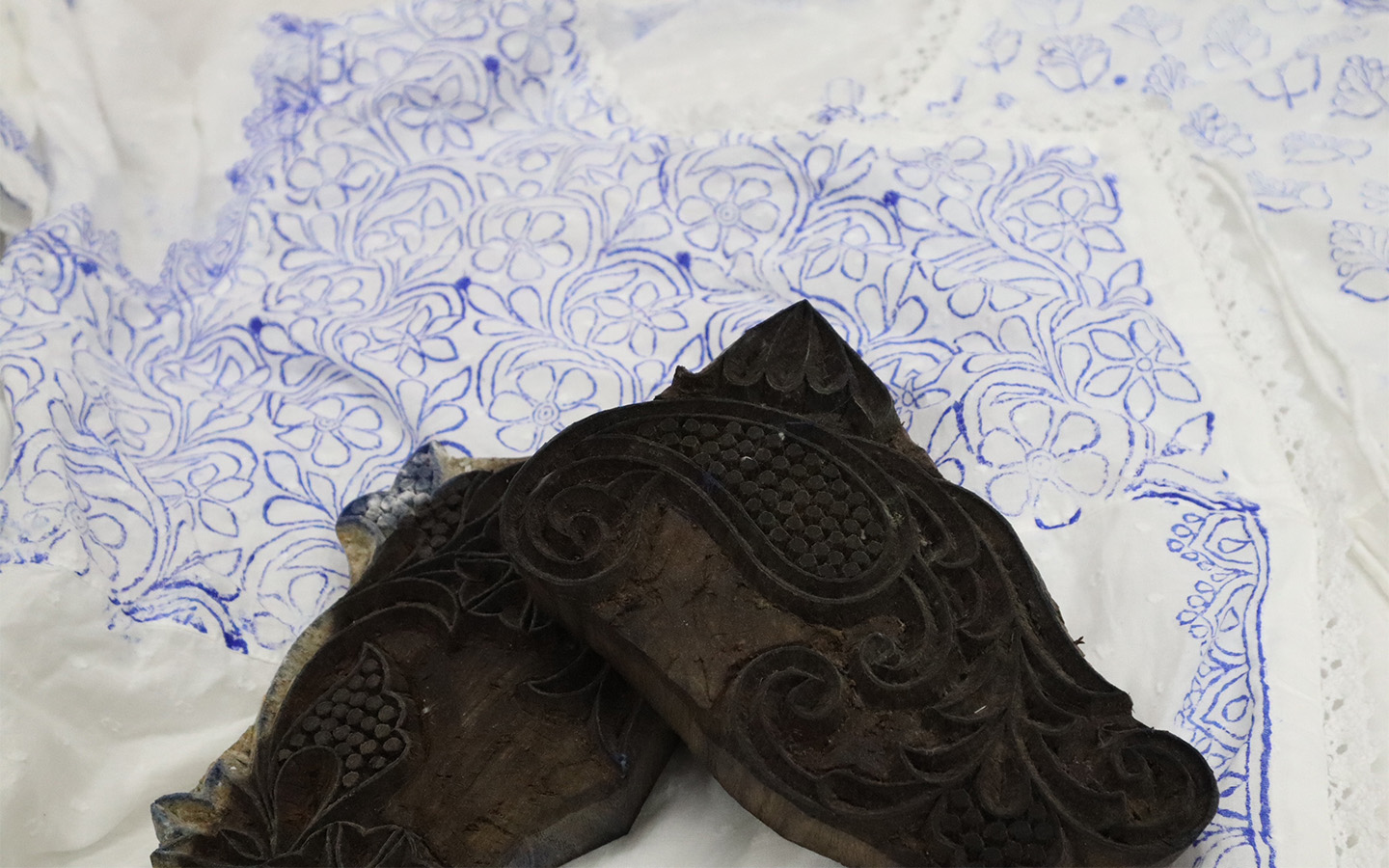
Wooden blocks used for printing a base pattern for Chikankari embroidery The fabric is then cut according to the shape that the garment is supposed to take. Then comes the embroidery process, where the material is placed in a small frame, part by part, and needlework begins to trace the ink patterns.
Learn about the variety of stitching styles involved in Chikan needlework
This Chikan needlework has about 32 different stitches, used separately or in combination.
The six basic stitches that make it unique are the Tepchi, Bakhiya, Hool, Zanzeera, Rahket and Banarasi.
The fabric comes to life with each needle swing that intricately weaves the custom design.
How NGO Sewa is helping Chikankari artisans get their due credit
The artisans who work wonders with their hands are often women, and their economic independence empowers them.
Hence, encouraging them to earn money is highly relevant.
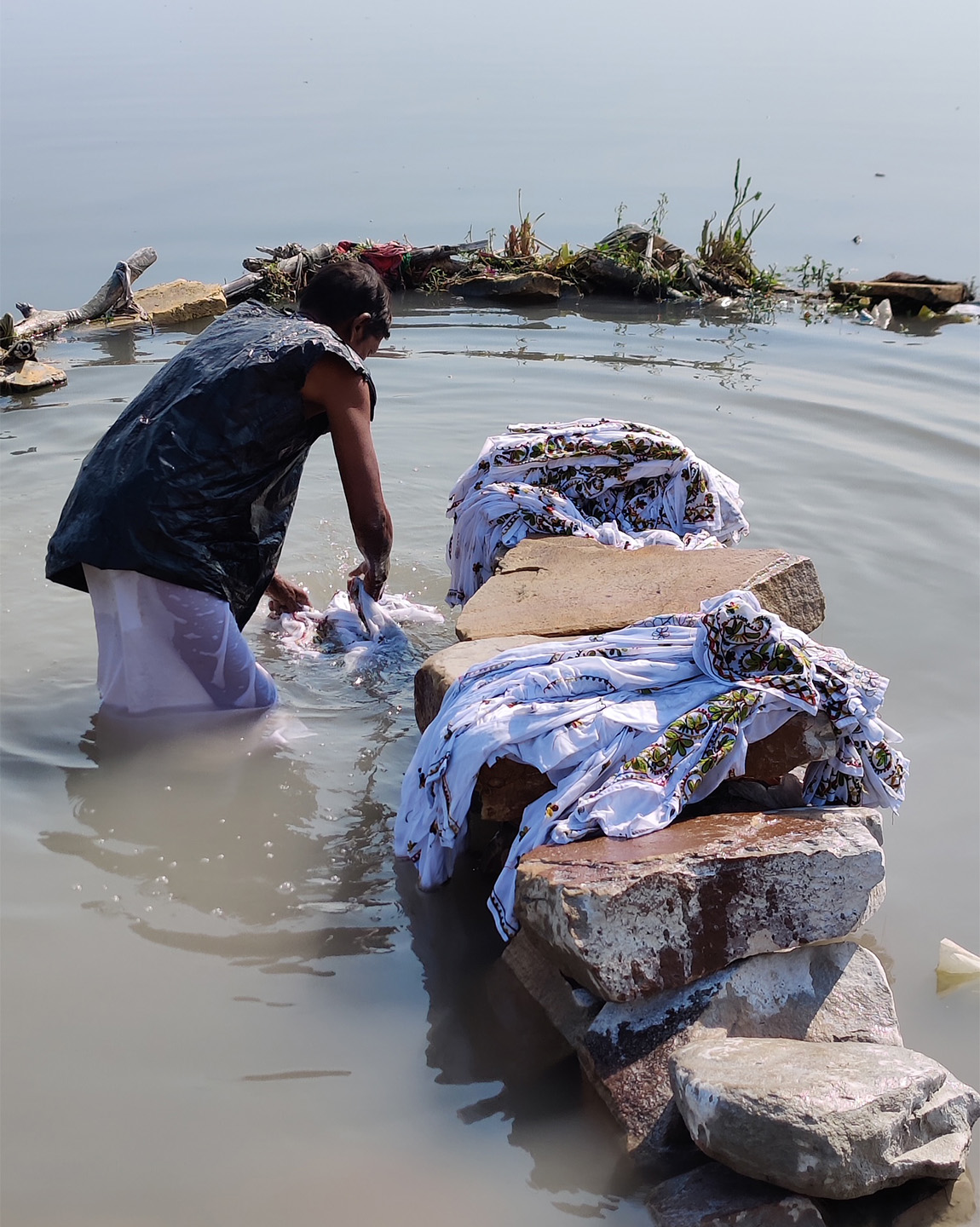
The skill level required for Chikankari embroidery is inherited over generations and perfected over a lifetime Sewa (Self-Employed Women’s Association) Chikan Lucknow is an NGO, for and from underprivileged women who want to cross the bridge of poverty.
Sewa started its work with education.
Established in 1984 with only 31 women, NGO Sewa began its journey to provide its members with adequate and timely wages. It is now working with over 7000 women, giving them the courage and freedom to earn for themselves.
The credit for this courage goes to Mrs Runa Banerjee, an Indian social worker who wanted to restore the dignity of this craft so that Chikankari could flourish to a new level without any unfair treatment of the artisans.
More often than not, artisans who make a living from this art are inadequately rewarded. The time and effort that Chikankari workers invest in creating a masterpiece are not fairly valued.
The pandemic had a severe impact on India’s Karigars and craft community. What can we do?
Since the pandemic hit the city, the industry has been hanging by a thread, leaving the Karigars (Indian artisans who make handicrafts for luxury brands) without any means of earning a living.
They lack basic facilities such as hygienic living and working conditions and social security, and a recent survey indicated low literacy levels.
Government support can solve many of these problems.
Strategies can be formulated to end these problems, and measures such as the use of GI (Geographical Indication) sign to stop the sale of counterfeits should be taken so that the industry can turn from unorganised to organised.
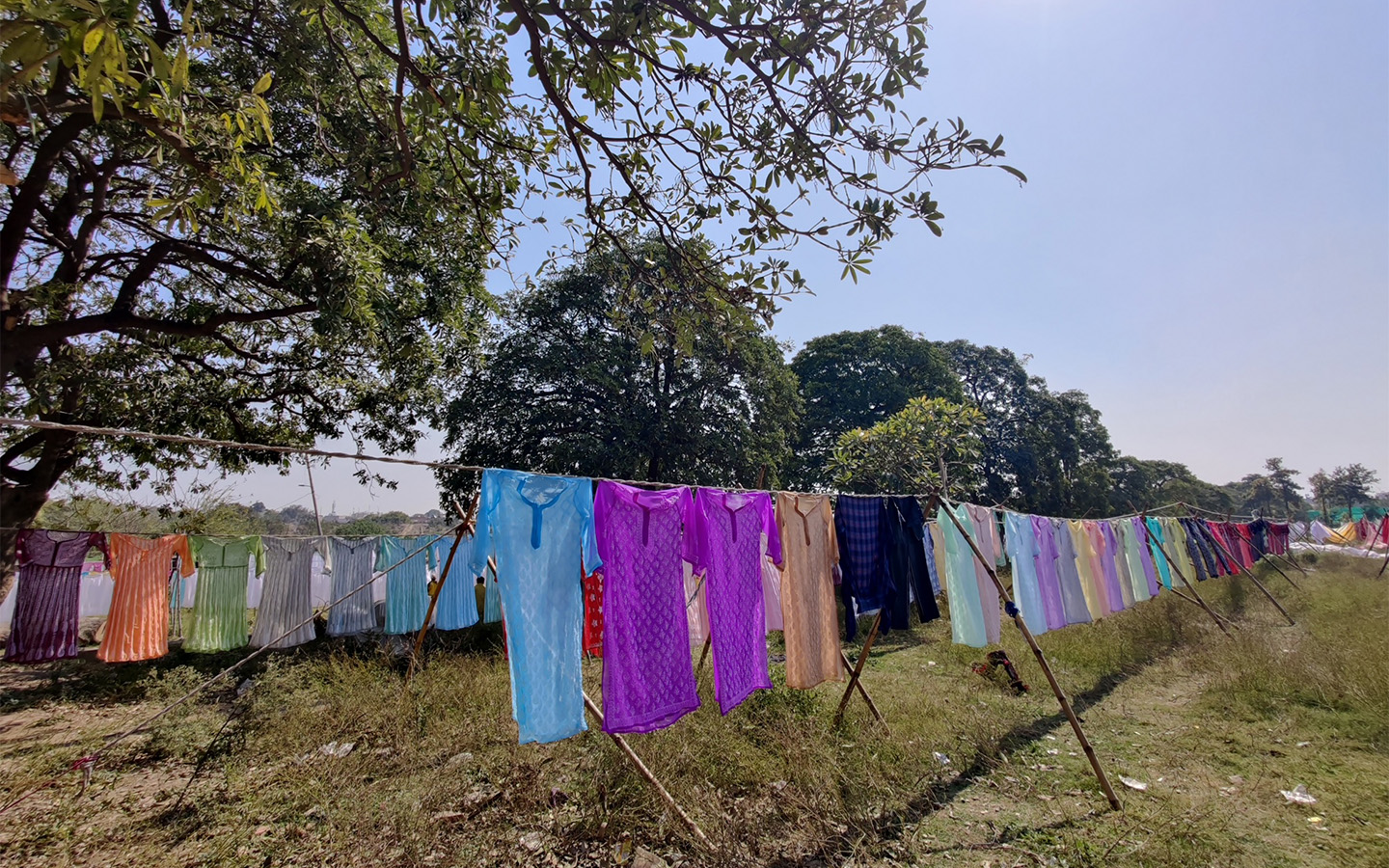
Chikankari's artisans take care of the perfect handmade stitches to give their garments a perfect look This would solve the problems and increase exports, resulting in higher revenues for entrepreneurs and the government. It would also lead to greater recognition in the international market.
Ethereal, elegant, and captivating – such is the art of the ancient Chikankari craft, yet it still has a long way to go.
Simply by adding a dash of modernity to the art and adopting globally effective branding and marketing strategies, Chikankari could reflect India’s rich culture and make the person wearing it feel like living in a dream palace straight out of a history book.
Ashika Ahuja
First-year student in the Fashion Styling Undergraduate Progression Course, Mumbai



